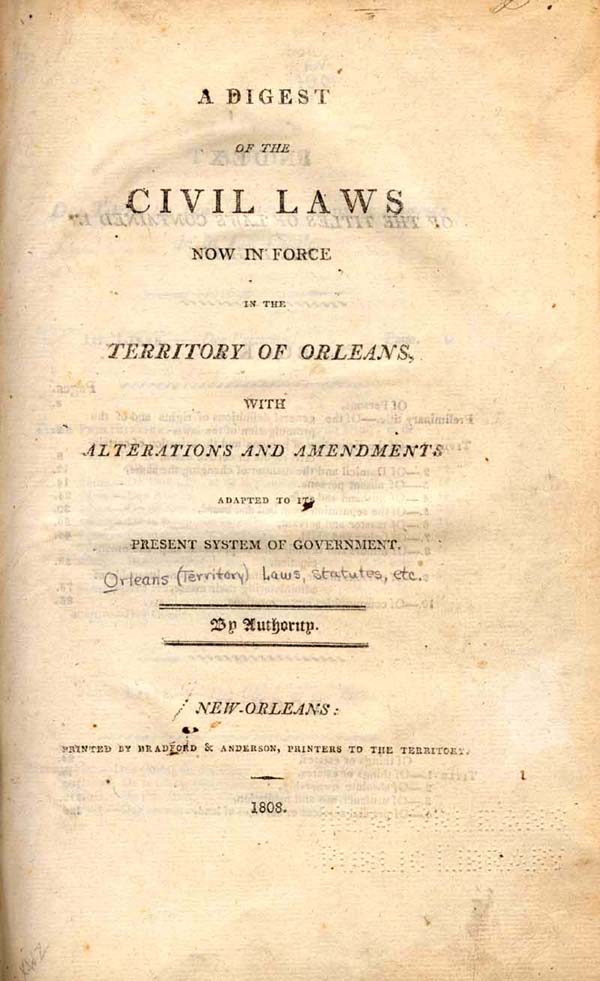
| |||
| Return to Table of Contents Go to Page [1] [2] [3] [4] [5] [6] [7] [8] [9] [10] [11] [12] [13] [14] [15] [16] [17] [18] [19] [20] [21] [22] [23] [24] [25] [26] [27] [28] [29] [30] [31] [32] [33] [34] [35] [36] [37] [38] [39] [40] [41] [42] [43] [44] [45] [46] [47] [48] [49] [50] [51] | |||
PAGE 44
| When W.C.C.
Claiborne was appointed
governor of the newly acquired province of Louisiana in 1803, he declared that all laws currently in force
would remain so until a permanent system of justice could be determined. When the governmental structure
of the Territories of Louisiana and Orleans was organized a few months later, Congress established a
system of courts, but left the structure of the law as it was; the current laws "were to continue in force, until
altered, modified, or repealed by the legislature." In the meantime the question under debate was whether
the Territory of Orleans would adopt a legal system based on English common law as the United States had
done, or whether the Territory would retain or modify the more familiar civil law system previously
established by the colony's French and Spanish colonial rulers.
| This state of affairs continued, amid considerable confusion and controversy, until 1808, when Louisiana's first civil code, A Digest of the Civil Laws Now in Force in the Territory of Orleans with Alterations and Amendments Adapted to the Present System of Government, was published. The code, authored by Louis Moreau-Lislet and James Brown and authorized by the territorial legislature, thus solidified the civil law tradition in Louisiana, which continues to this day.
The page shown here is from Book I, Title VI, Chapter 3, Article 17, "Of Slaves." View a page
from this book
| 
|